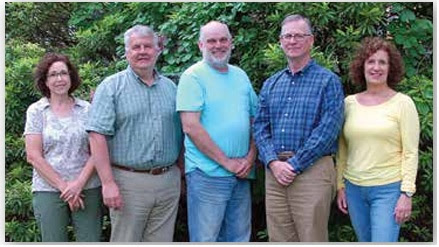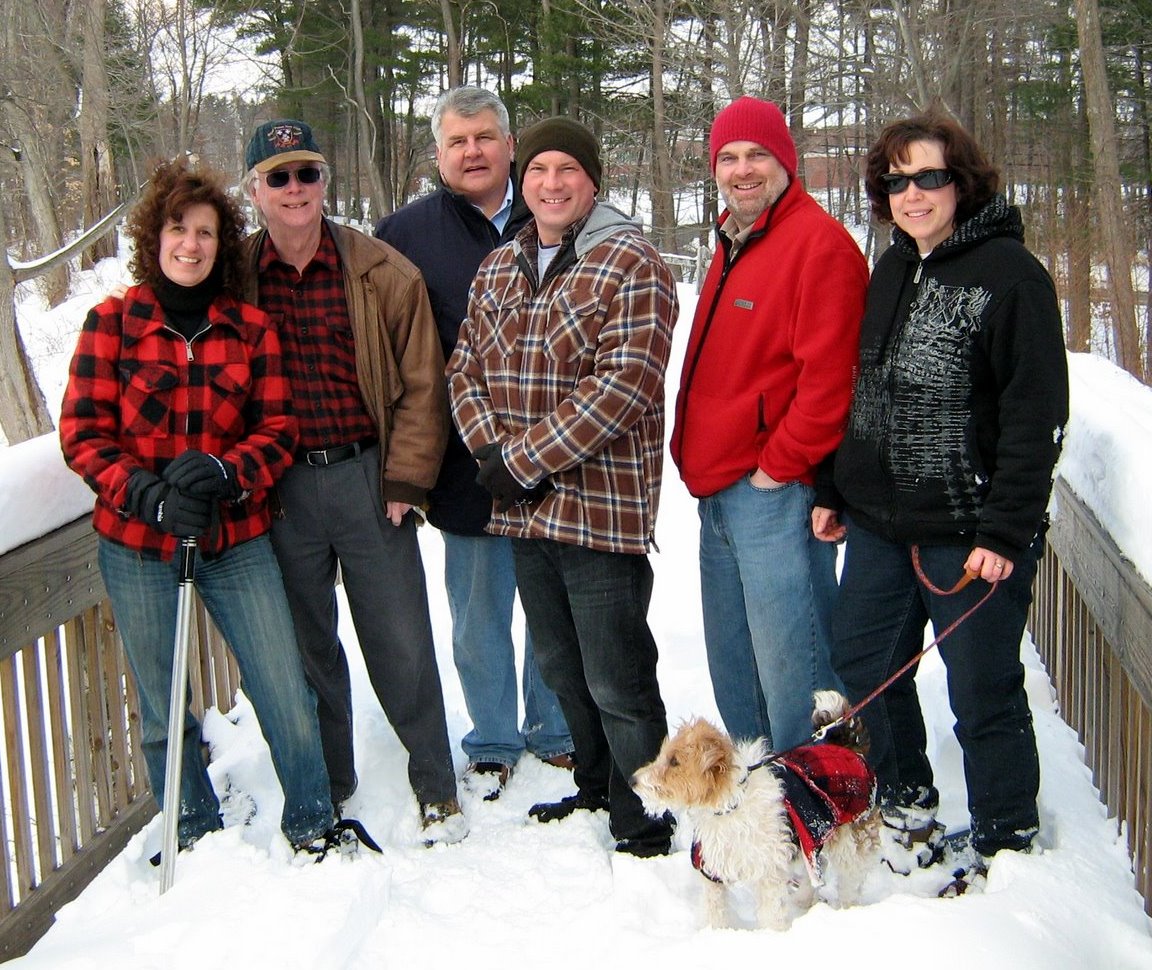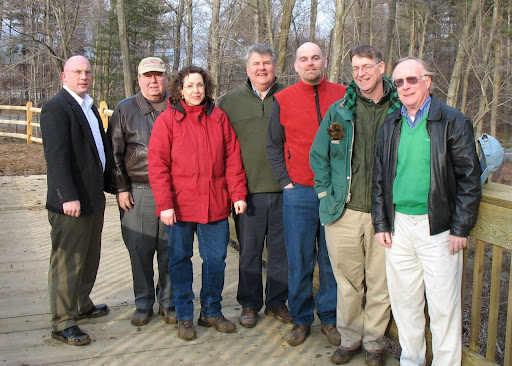http://www.zwire.com/site/news.cfm?newsid=20139501&BRD=1648&PAG=461&dept_id=11784&rfi=6
City asking for public feedback on open space
By: Gabriella Doob, Editor
SHELTON - The city wants to hear from residents about how open space should be used. The Conservation Commission is requesting input on its draft of an Open Space Plan, a hefty document that defines open space and greenways around town. The draft is an update of a 1993 plan that supplemented the Plan of Conservation and Development. After a period of public commentary, the draft will go before the Planning and Zoning Commission, which will then hold a public hearing before voting on the plan. The Board of Aldermen will also review the document.** The Open Space Plan is more of a planning document to help land use boards and decision makers understand the spacial recognition and characteristics for land that is currently or could become City Open Space, or otherwise protected from development such as Purchase of Development Rights. The ConsComm is always looking for public input, but officially, the public comment comes during the public hearing held by the PZC as it is their document to adopt.**
Gallagher said that while the plan is similar to the 1993 version, it defines several new greenways, or scenic routes set aside for recreational activity. The Conservation Commission has worked to expand the greenways in town and more clearly establish them through maps. The acquisition and management of open space has become increasingly important and visible in recent years, she added.There are over 1,900 acres of open space land in Shelton, she said.
**Greenways were defined conceptually in the current OSPlan, and they serve more than just scenery or recreation, though those are two components contributing to our community's quality of life. Various acquisitions were made according to their rough layout over several years. This has created actual greenway corridors of protected land along with associated or nearby lands to the corridor that has been developed since the current OSPlan was adopted in 1993. This allows better definition and movement away from simply conceptual greenways, though that is still a consideration.**
Besides delineating the greenways that already existed, the plan reflects the addition of several new greenways including the Long Hill Greenway and the Ivy Brook Greenway, said Conservation Commission Chairman Tom Harbinson. The plan "more formally recognizes the acquisition efforts done in the past," he said. "We've acquired a lot of property in those corridors."
** The Long Hill Greenway is a great example of concepts working to create a reality. As property was acquired along the Housatonic River Greenway in the area of Old Coram Road, some of those parcels had ridge lines that impacted the Housatonic River viewshed but also reached to Long Hill Avenue, linkage was being made to create a corridor from the Housatonic River Greenway to the Far Mill Greenway by acquiring Klapik Farm and Tall Farm, which expanded with the Behuniak and Carrol parcels adjacent to Long Hill School. They all followed the OSPlan in linking Greenways where possible, but collectively have further created a mass of land (>100 acres) that should be given it's own recognition, thus the identity given of Long Hill Greenway.**
Gallagher said the plan will serve as a reference document for city boards as well as for residents. It includes years of research on open space land use, she said. It should also help people make informed judgments about how they would like open space to be used, Gallagher said. For instance, some residents have expressed interest in creating a dog park. The plan would be useful in determining where such a park could be located, she said. Ball fields and hiking areas are other top priorities for those in town, Gallagher added.
** Land use boards refer to the maps and plan when making decisions on development. Fiscal boards refer to the maps and plan when making decisions on acquisition possibilities. Outside agencies refer to the maps and plan when deciding upon awarding grants or contributions toward acquisitions and enhancements of parcels. Public can refer to the maps to better understand what to expect from City properties and judge any impact upon their quality of life. Certain lands are better preserved because the soils are rich in organics for farming, certain lands are conserved for future City needs such as recreation fields. A plan looks up to the future with wide open eyes, it does not look down at a current development application squinting at a map of the moment.**
Gallagher composed the majority of the document herself but the draft also includes extensive maps, Harbinson said. Modern mapping techniques have enabled the commission to visually reflect information about parcels of property, he said. Clicking on the maps allows a viewer to assign certain attributes to properties around town. For example, a viewer could click to see what parcels have open space tags or which have preservation designations, meaning they are owned by the Shelton Land Conservation Trust. Acquisitions and purchases can be easily illustrated through these methods, he said. Harbinson likened this technology to transparencies, which can be overlapped on a projector to visually demonstrate certain realities.
** Teresa Gallagher is the Conservation Agent for the City of Shelton, and working part-time was able to draft the OSPlan document reviewed by the Conservation Commission. The Finance Department had Regis Dognin use the City's GIS system to help create the maps. A GIS (Geographic Information System) is a modern tool where parcel data can be documented and referenced in a spatial way. It is an extremely powerful tool, not yet fully recognized by local leadership for the potential it has to quickly, coherently, and efficiently portray data that brings better decision making. Here is a link to a web interface that examples just a portion of what NYC offers for it's GIS data at a location (100 Park Avenue, Manhattan) where my company worked on the building's facade.**
While the plan hasn't changed much in essence, Harbinson said this new technology has made it a lot easier for viewers to conceptualize the space being discussed."It really behooves people to take a look at the maps," he said. Harbinson said he doesn't anticipate any major concerns from those who look over the plan. Some residents may be distressed to learn that future trails may limit some of the privacy they have enjoyed near their homes, while others may be pleased at the possibilities for accessing trails more readily. "For some people it's a very attractive amenity," he said.
** People that can walk from home to the 15mile trail network within Shelton Lakes are an example of those pleased with trails. However, there can be at times public concern over trails being constructed near their private property. There is a trail network around the state known as 'Blue Dot Trails' that are maintainted by the Ct Forest & Parks Association. They follow some of the oldest footpaths in CT, and are thus are referenced with Indian names. One such trail used to traverse through Shelton from Monroe to Stratford, but has become fragmented via subdivision of parcels and development. One long held goal by the ConsComm is to re-establish some lost Shelton segments of the Paugusset Trail. It has been on our planning documents for years. It was a stated reason why several parcels were acquired along the Housatonic River Greenway. It was the purpose for setting aside a public open space area on certain subdivisions. All of those components take time to assemble and occur. Now accomplished, new residents that had utilized public property for their personal gardens and playscapes for several years were notified of trails being proposed. The contrast between moving sheds, gardens and swingsets off of public property, and opening the area to public walking in space previously viewed as private backyard was jarring, and generated opposition expressed to the resident's Aldermen. The ConsComm presented alternatives, and that has dismayingly had no comment or decision from the BOA for about 2yrs now. An OSPlan with ample opportunity to comment on and review maps, will diffuse such possible conflicts in the future.**
Harbinson stressed how important it is that residents have this information at their disposal. "I'm a big proponent of transparency," he said. "People can see what we're doing and if they have comments, give us those comments." The current plan is available online at http://sheltonopenspace.googlepages.com and more information can be obtained by calling Conservation Agent Teresa Gallagher at 924-1555, ext. 315.
** Blogging of news or my comments on them, publishing communications among the ConsComm live as they happen, maps online, every agenda and minutes from our meetings, photos and videos of what our agent sees in the field and communicates to commissioners : all offered to the public in the hope that they can make better judgement and contribute better input to us on the ConsComm who are charged with making the comment and advice to decision makers on agencies such as the BOA and PZC.**



